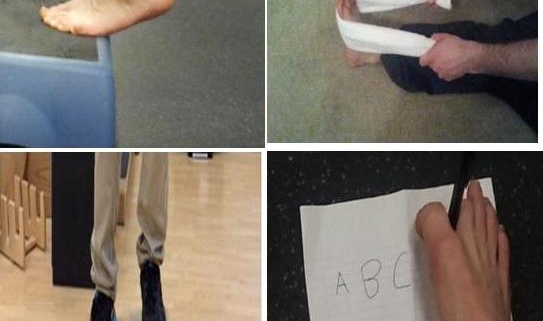
Foot Rehabilitation
Overview
Foot rehabilitation is a specialized type of physical therapy designed to treat foot injuries, conditions, improve foot function, and alleviate foot pain. Anyone may need foot rehabilitation, from athletes who have injured their feet or ankles to patients who need therapy following foot or ankle surgery, or those suffering from age-related foot conditions.
Types
Significant subtypes of foot rehabilitation are conditioned-based and injury-based rehabilitation:
1. Condition-Based Rehabilitation: Treats conditions like plantar fasciitis, bunions, arthritis, and flat feet.
2. Injury-Based Rehabilitation: Treats injuries like fractures, sprains, torn ligaments, or tendonitis.
Causes
Factors leading to the need for foot rehabilitation include acute injury, chronic medical conditions, and post-operative recovery. These could be:
– Sports injuries: Caused due to overuse or a traumatic event
– Age: Older people are more at risk for foot problems
– Pre-existing conditions: Conditions like diabetes, arthritis, or obesity can lead to foot issues
- Occupation: Jobs that require extended periods of standing or walking
– Surgery: Rehabilitation can be part of post-operative recovery
Symptoms
Symptoms warranting foot rehabilitation are:
– Persistent pain in the feet or ankles
– Difficulty traversing distances
– Swelling or inflammation
– Reduced range of motion
– Numbness or tingling in the feet
Diagnosis
Diagnosing foot problems generally involves a physical exam and examination of medical history. Other procedures can include:
– Imaging tests: X-rays, MRIs, or CT scans
- Stress tests: To determine the cause of pain and discomfort
– Biomechanical analysis: To identify structural issues impacting foot function
Treatment Options
Foot rehabilitation can include both conservative and surgical approaches:
– Physical therapy: Includes exercises to build strength and flexibility, balance training, and manual therapy
– Assisted devices: Braces, orthotic devices, or shoes may be used to assist in walking and movement
– Medication: To manage pain, inflammation, or underlying conditions
- Surgery: In severe instances, surgery may be recommended
Living With Foot Rehabilitation
Practical tips for managing foot rehabilitation include:
– Follow the physiotherapist’s recommendations carefully
– Wear appropriate footwear
– Warm up before engaging in physical activity
– Maintain a healthy weight to mitigate stress on your feet
- Stay diligent about medication management
When to Seek Help
It is crucial to recognize when professional help is required:
– Persistent foot or ankle pain not improving with rest
– A decrease in foot function ability
– Tingling or lack of sensation in the foot
– Abnormal swelling, warmth, or redness
- Difficulty walking, or balance issues
Using proper cooling down techniques and preventive measures such as using appropriate equipment, wearing supportive footwear, and listening to your body can significantly reduce the risk of foot injuries that might require rehabilitation.
This patient guide has aimed to give you a comprehensive understanding of foot rehabilitation, from recognizing symptoms to when to seek professional help. Remember that each patient’s journey is unique and what works best will depend on individual circumstances. With regular care and maintenance, you can protect your feet and maintain an active, high quality of life.
